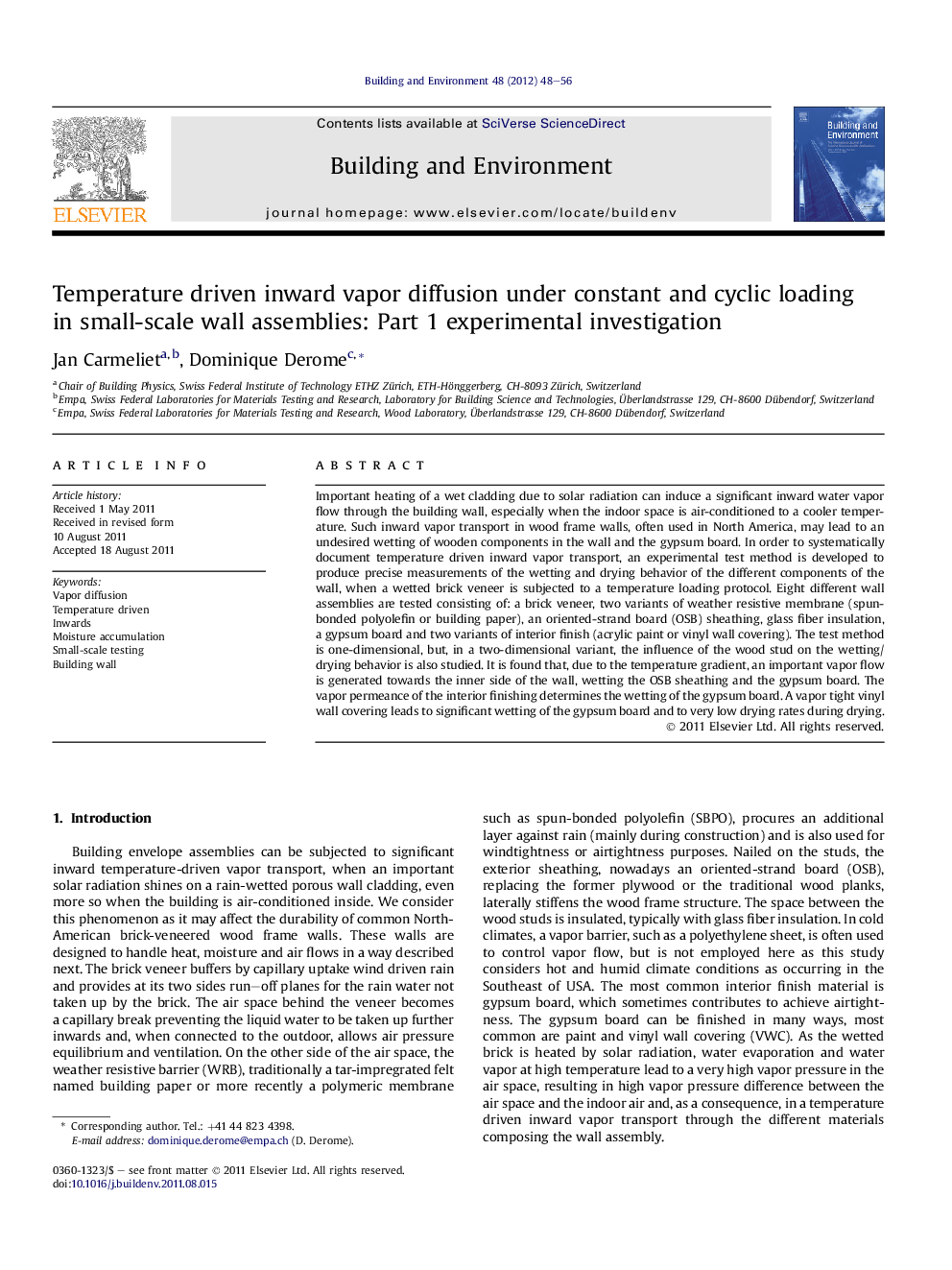| Article ID | Journal | Published Year | Pages | File Type |
|---|---|---|---|---|
| 248791 | Building and Environment | 2012 | 9 Pages |
Important heating of a wet cladding due to solar radiation can induce a significant inward water vapor flow through the building wall, especially when the indoor space is air-conditioned to a cooler temperature. Such inward vapor transport in wood frame walls, often used in North America, may lead to an undesired wetting of wooden components in the wall and the gypsum board. In order to systematically document temperature driven inward vapor transport, an experimental test method is developed to produce precise measurements of the wetting and drying behavior of the different components of the wall, when a wetted brick veneer is subjected to a temperature loading protocol. Eight different wall assemblies are tested consisting of: a brick veneer, two variants of weather resistive membrane (spun-bonded polyolefin or building paper), an oriented-strand board (OSB) sheathing, glass fiber insulation, a gypsum board and two variants of interior finish (acrylic paint or vinyl wall covering). The test method is one-dimensional, but, in a two-dimensional variant, the influence of the wood stud on the wetting/drying behavior is also studied. It is found that, due to the temperature gradient, an important vapor flow is generated towards the inner side of the wall, wetting the OSB sheathing and the gypsum board. The vapor permeance of the interior finishing determines the wetting of the gypsum board. A vapor tight vinyl wall covering leads to significant wetting of the gypsum board and to very low drying rates during drying.
► Walls are subjected to conditions leading to temperature driven inwards moisture transport. ► Well-documented experimental dataset is produced. ► Low permeability of the interior finish leads to high moisture accumulation. ► Exterior sheathing and weather resistive membrane play a less prominent role.
